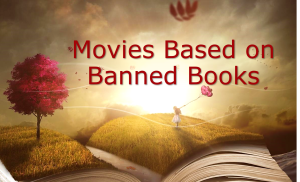 Banned books are trending on social media and in the news. Parent groups concerned about the content in books stage protests and overrun school and library board meetings. If you’re not a reader and want to know what this banned book whoopla is all about, have I got a surprise for you. Many banned books have been made into movies!
Banned books are trending on social media and in the news. Parent groups concerned about the content in books stage protests and overrun school and library board meetings. If you’re not a reader and want to know what this banned book whoopla is all about, have I got a surprise for you. Many banned books have been made into movies!
Common refrains from book banners are, “Books should have a rating system, like movies” and “Books for adults should be kept separate from books for children.”
Both of those things already happen! Books are rated and organized according to age-appropriateness and reading level. There’s no way a child perusing picture books would accidently stumble across a western, a romance, or even a Christian fiction novel because they are all shelved in different parts of the library.
But my question to book banners is, “If the books are so bad, how come no one is trying to ban the movie?”
Below, I’ve outlined the basics of how books are organized and catalogued in schools and libraries. I’ve also included lists of popular movies based on banned books for each category.
Age Categories for Books
Board Books & Picture Books – Designed for children from birth thru age 5.
Early Readers – Very shot books designed for pre-K thru 2nd grade.
Books designed for children in these groups correspond to G rated movies. However, given today’s political climate, the anti-literacy movement has even found cause to ban books that are effectively rated G. Below is sampling of movies adapted from these types of books:
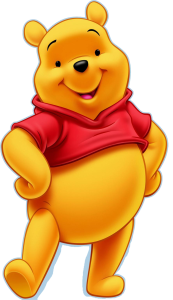
- Winnie the Pooh (1926)*
Winnie-the-Pooh is #22 on the American Library Association’s 100 most-banned classics list. A parent group in Kansas objected to the book, claiming the talking animals in Winnie-the-Pooh were an insult to God. - Clifford the Big Red Dog (1963)*
Clifford was banned in Alabama after parents claimed some of the adult characters were lesbians. - Horton Hears a Who! (1954)*
This book has drawn attention from both sides of the political aisle. Liberals claim Horton is a white-supremacist and Dr. Suess is a racist that deserves to be “canceled.” Conservatives complain that the book’s promotion of tolerance and acceptance of all people is an example of Critical Race Theory (CRT) in classrooms.
Chapter Books – Longer books that still contain pictures. Target audience is 1st thru 3rd grades.
Middle Grade Books – Written for children in 4th thru 7th grade.
Books designed for children in these grades are effectively rated PG. Below is sampling of movies adapted from middle grade and chapter books:
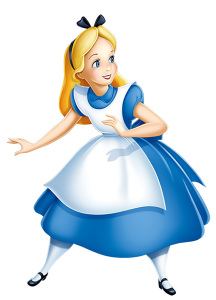
- Alice in Wonderland (1865)*
Banned in New Hampshire over concerns the novel promoted masturbation and sexual fantasies. Parents also believed the caterpillar openly using a hookah pipe encouraged drug use. - Where the Wild Things Are (1963)*
Banned heavily in schools & libraries the American South citing concerns regarding witchcraft/supernatural elements. - Diary of a Wimpy Kid (2007)*
Banned in Texas for containing sexually explicit material, being obscene, and being anti-family. - Chronicles of Narnia (1950)*
The Lion, the Witch and the Wardrobe was banned for depictions of graphic violence, mysticism, and gore.
Young Adult (YA) Books – Written for children in 8th thru 12th grade. Although, many adults also enjoy YA novels. In these books, the protagonist is usually between the ages of 15 and 19. These books have an effective movie rating of PG-13. A sample of movie adaptations of YA novels is below:
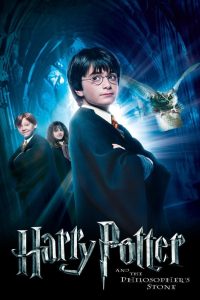
- Harry Potter (1997)**
The Harry Potter Series are the most banned books in the United States and even have bans in Idaho. Reasons for banning the book include fear that the books promote witchcraft and concerns that Dumbledore is gay. - The Hobbit/Lord of the Rings (1937)*
Coming in at #40 on the American Library Association’s banned book list, the classic Lord of the Rings trilogy and The Hobbit has been banned in many schools and public libraries across the nation for promoting witchcraft and satanic themes. There are also fears that the books promote smoking. - Hunger Games Series (2008)*
Peaking at the #3 spot on the American Library Association’s most frequently banned and challenged books, parents claim the books contain offensive language, violence, are anti-family, and occult/satanic. - The Book Thief (2006)*
Reasons for bans in Texas and Florida include the book’s portrayals of life in Nazi Germany and the Holocaust. - The Giver (1993)**
Banned in Montana, Florida, Ohio, and Idaho owing to it’s mentions of euthanasia, sexuality, and suicide. - Twilight (2005)*
At #5 on the American Library Association’s banned books list, reasons for banning include being sexually explicit, containing offensive language, promoting violence and the occult. - Me, Earl, and the Dying Girl (2012)***
Banned for being sexually explicit and containing profanity. - The Perks of being a Wallflower (1999)***
Banned for sexual content and glorifying the use of alcohol and drugs.
New Adult (NA) Books – Target audience is 18- to 25-year-olds, so high school juniors and seniors may fall into this category especially if they are strong readers. These movie adaptions may be rated R/TV-MA.
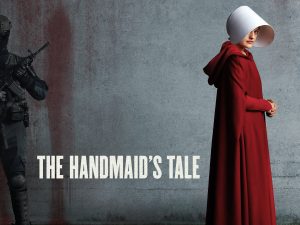
- Beloved (1987)***
Banned for depictions of violence, sexuality, racial themes, offensive language, and supernatural elements. - The Handmaid’s Tale (1985)**
Banned for being anti-Christian, morally corrupt, and including profanity. - The Shining (1977)*
Banned in Wyoming and Alabama because it contains violence, demonic possession, and ridicules Christianity. - The Color Purple (1982)**
Banned because the book portrays a lesbian relationship. The book is considered blasphemous and an example of Critical Race Theory (CRT) being taught in schools. - Looking for Alaska (2005)***
The novel was adapted for a TV miniseries with the rating TV-MA. The book was banned for offensive language and sexually explicit descriptions.
Adult Fiction – Main character tends to fall between the ages of 20 and 40. However, many teens enjoy adult fiction, just as many adults enjoy YA fiction. Examples of adult fiction adapted to television are:
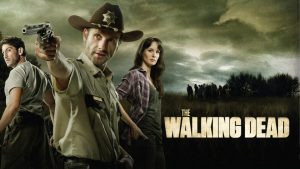
- Game of Thrones (1996)*
Banned in Texas for obscene content. - The Walking Dead (2003)**
Banned in Idaho because the books did not contain material appropriate for a “scholastic environment.”
Mature Fiction – The target audience for these books are people over 40. Like adult fiction and new adult fiction, when it comes to TV and movie ratings, these can be anything from PG to R. Because the intended audience is people over 40, I was only able to find two book/movie adaptations where the book had been banned:
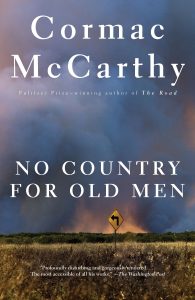
- No Country for Old Men (2005)*
Banned in Texas for violence. - The Secret Life of Bees (2001)*
Banned in Texas for inappropriate language.
Other examples movie adaptations that were based on books for mature audiences are:
- On Golden Pond
- Driving Miss Daisy
- Cocoon
- A Man Called Otto
- Tell Me A Riddle
- The Notebook
- The Best Exotic Marigold Hotel
- Harold and Maud
- Secondhand Lions
I can already hear the book banners asking, “But what about all the kinky x-rated stuff?”
In literature, we call that erotica. Schools don’t shelve erotica because it’s not age appropriate. And most libraries don’t shelve erotica because it’s widely viewed as lacking literary value. If someone is looking for erotica, they’re typically out-of-luck at bookstores, too. The closest someone is likely to find is a spicy romance.
The fact that Harry Potter is the most banned book in the United States, but no one is making a fuss over the movies tells me the issue isn’t concern about inappropriate content in books. The real goal is defunding programs that promote literacy.
Locations where books were banned:
Banned somewhere in USA (*)
Banned somewhere in Idaho (**)
Banned in Potlatch, Idaho (***)
Looking for more movies based on books?
Check out the links below:
Well, thanks to Florida, I need to add a children’s TV show to the list. A book based on everyone’s favorite PBS aardvark is being removed from Florida schools. Bruce Friedman, a conservative activist with the No Left Turn in Education group filed detailed complaint about “Arthur’s Birthday” written by Marc Brown in 1989.
My kids had this book and watched the TV show when they were little. Francine (a monkey) has a crush on Arthur (an aardvark), but Arthur does not reciprocate her affections. Despite this, Francine gives Arthur a bottle for his birthday. Written on the bottle is “Francine’s Spin the Bottle Game.” Although no kissing takes place in the story, Friedman took umbrage with the insinuation that the cartoon animals might kiss.
In his complaint, he said that references to spin the bottle, a game that dates back to the 1920s, were not appropriate for any age group and reading about the game has the potential to “damage souls.”
https://www.theguardian.com/us-news/2023/jul/28/arthurs-birthday-childrens-book-ban-florida